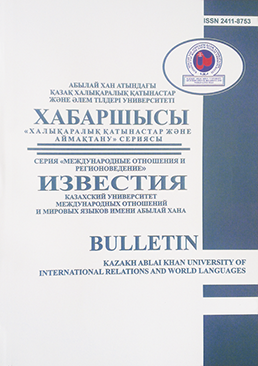CENTRAL ASIAN STATES IN THE SHANGHAI COOPERATION ORGANIZATION: THE ROLE AND PLACE OF THE SCO ON THE DISTRIBUTION OF THE POWER BALANCE IN THE REGION
DOI:
https://doi.org/10.48371/ISMO.2022.50.4.003Keywords:
Shanghai Cooperation Organization, Central Asia, Kazakhstan, Uzbekistan, Kyrgyzstan, Turkmenistan, Tajikistan, power balanceAbstract
The formation of the Shanghai Five at the end of the XX century and its transformation into the Shanghai Cooperation Organization at the beginning of the XXI century is an important event in international relations. It created many opportunities for the development of foreign international and economic relations for Central Asian states within member states and also with dialogue partners. The development process of the Shanghai Cooperation Organization began with the establishment of confidence-building and the reduction of troops in the border areas of China, Russia, Kazakhstan, Kyrgyzstan, and Tajikistan. In this regard, the five countries signed agreements to establish mutual trust and reduce the number of troops. The SCO is the successor to the Shanghai Five, which was formed by the initiative of Kazakhstan between the People's Republic of China, Russia, and three Central Asian countries such as Kazakhstan, Kyrgyzstan, and Tajikistan. The main achievement of the Shanghai Five was the signing of the Treaty on Deepening Military Trust in Border Regions. But to date, only Turkmenistan and Kazakhstan among all the Central Asian states have been able to resolve the issue of delimitation of land borders with neighboring countries. The authors of the article state that the Shanghai Cooperation Organization has been used as a tool for balancing power by Russia and China over Central Asia. The geopolitical importance of Central Asia is highly appreciated not only by these countries but also by others, for example, the accession of Pakistan and India to the organization, and the new member Iran and the interest of Turkey will serve as a vivid example







